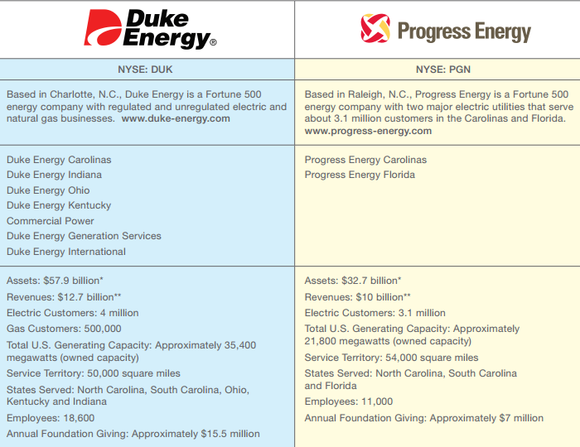DUK 2 Duke Energy Earnings Trades to Power Your Portfolio
Post on: 30 Апрель, 2015 No Comment

Recent Posts:
DUK: 2 Duke Energy Earnings Trades to Power Your Portfolio
Electric power specialist Duke Energy Corp (NYSE:DUK ) will join the dwindling earnings parade next week, with the company slated to release its fourth-quarter figures ahead of the open on Wednesday, Feb. 18. DUK stock is up nearly 20% since the start of 2014, but the shares have recently taken a hit due to ex-dividend and Duke’s acquisition of a majority stake in California-based REC Solar.
For the record, Wall Street is expecting a third-quarter profit of 88 cents per share from Duke, marking a roughly 13% decline from the $1 per share the company earned in the year-ago period. That said, year-over-year comparisons will be difficult due to a considerably harsh winter conditions last year.
Still, Duke has bested the consensus estimate in three of the past four reporting periods by an average of 3.7%. As such, EarningsWhisper.com reports that the fourth-quarter whisper number for Duke earnings comes in at 91 cents per share.
Taking a broader look at analyst activity, DUK stock has not attracted much optimism. According to Thomson/First Call, only six of the 19 analysts following DUK stock rate the shares a “buy” or better, compared to 11 “holds” and two outright “sell” ratings. Additionally, the stock is trading a mere 3.6% shy of the consensus 12-month consensus price target of $84 per share. The takeaway here is that upgrades and price-target increases could go a long way to bolstering investor confidence in the stock.
Turning to the options pits, we find that speculative short-term traders are just as noncommittal on DUK stock as the brokerage community. Specifically, the February/March put/call open interest ratio arrives at a middling reading of 1.19. Furthermore, this reading dips only slightly when zeroing in on the front-month February series, arriving at 0.92.
Click to Enlarge Overall, options traders aren’t expecting much of a move from DUK stock following next week’s earnings report. In fact, February implieds are pricing in a potential post earnings move of only about 1.5%.
This places the upper bound at $82.44, which is well shy of technical resistance at DUK’s 10- and 50-day moving averages, while the lower bound lies at $80.06, which is just above key round-number short-term technical support.
2 Trades for DUK Stock

Call Spreads: With DUK stock verging on oversold territory, I believe that the shares are primed for a short-term rebound. While fourth-quarter earnings should arrive inline, guidance could be better than expected, potentially leading to a shift in sentiment for DUK stock. For those willing to take a risk, a Feb $80/$82.50 bull call spread has potential.
At last check, this spread was offered at $1.20, or $120 per pair of contracts. Breakeven lies at $61.20, while a maximum profit of $1.30 cents, or $130 per pair of contracts, is possible if DUK stock closes at or above $82.50 when February options expire.
Selling Puts: If a call spread isn’t your cup of tea, or if the potential return on the above trade isn’t lucrative enough for you, then a DUK put sell may be a way to pad your portfolio while taking advantage of the stock’s technical support. Along those lines, a Feb $80 put sell might be a way to capitalize on DUK’s technical backdrop.
After the close last night, the Feb $80 put was bid at 70 cents, or $70 per contract. The upside to this put sell strategy is that you keep the premium as long as DUK stock closes above $80 when February options expire at the end of next week. The downside is that should DUK trade below $80 ahead of expiration, you could be assigned 100 shares for each sold put at a cost of $80 per share.
As of this writing, Joseph Hargett did not hold a position in any of the aforementioned securities.














